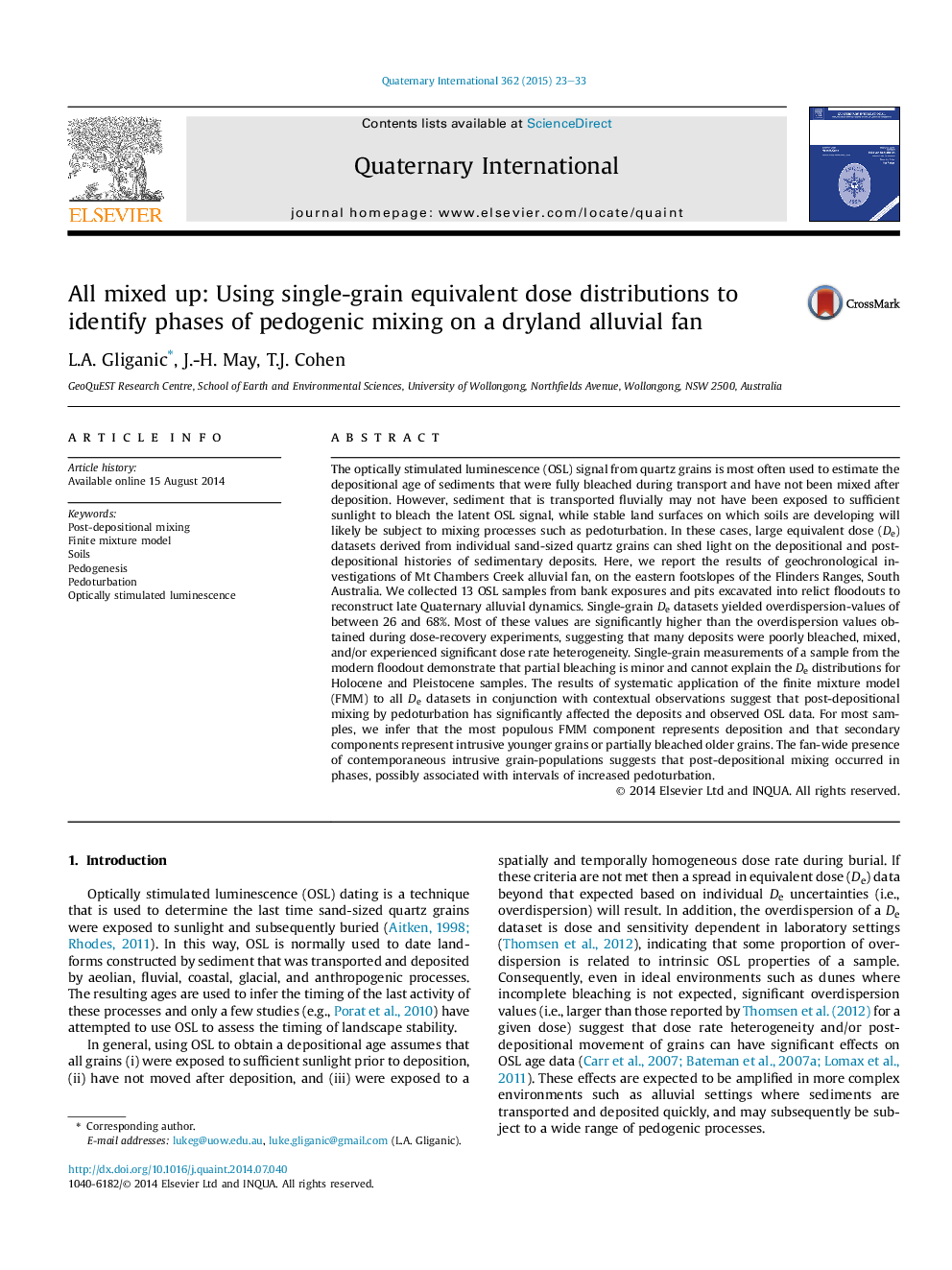| کد مقاله | کد نشریه | سال انتشار | مقاله انگلیسی | نسخه تمام متن |
|---|---|---|---|---|
| 1040837 | 1484135 | 2015 | 11 صفحه PDF | دانلود رایگان |

The optically stimulated luminescence (OSL) signal from quartz grains is most often used to estimate the depositional age of sediments that were fully bleached during transport and have not been mixed after deposition. However, sediment that is transported fluvially may not have been exposed to sufficient sunlight to bleach the latent OSL signal, while stable land surfaces on which soils are developing will likely be subject to mixing processes such as pedoturbation. In these cases, large equivalent dose (De) datasets derived from individual sand-sized quartz grains can shed light on the depositional and post-depositional histories of sedimentary deposits. Here, we report the results of geochronological investigations of Mt Chambers Creek alluvial fan, on the eastern footslopes of the Flinders Ranges, South Australia. We collected 13 OSL samples from bank exposures and pits excavated into relict floodouts to reconstruct late Quaternary alluvial dynamics. Single-grain De datasets yielded overdispersion-values of between 26 and 68%. Most of these values are significantly higher than the overdispersion values obtained during dose-recovery experiments, suggesting that many deposits were poorly bleached, mixed, and/or experienced significant dose rate heterogeneity. Single-grain measurements of a sample from the modern floodout demonstrate that partial bleaching is minor and cannot explain the De distributions for Holocene and Pleistocene samples. The results of systematic application of the finite mixture model (FMM) to all De datasets in conjunction with contextual observations suggest that post-depositional mixing by pedoturbation has significantly affected the deposits and observed OSL data. For most samples, we infer that the most populous FMM component represents deposition and that secondary components represent intrusive younger grains or partially bleached older grains. The fan-wide presence of contemporaneous intrusive grain-populations suggests that post-depositional mixing occurred in phases, possibly associated with intervals of increased pedoturbation.
Journal: Quaternary International - Volume 362, 19 March 2015, Pages 23–33